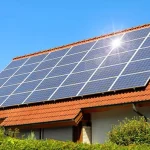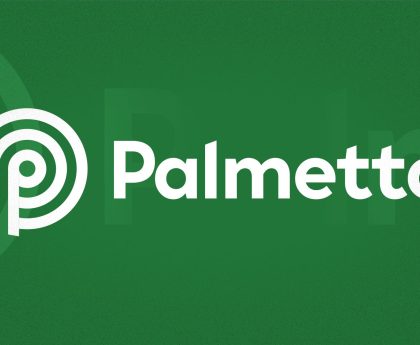A solar inverter, also known as a photovoltaic (PV) inverter, plays a crucial role in solar power systems by converting variable direct current (DC) generated by solar panels into standard alternating current (AC). This conversion facilitates the seamless integration of solar energy into conventional AC-powered devices. One key metric in this context is the DC/AC ratio or Inverter Load Ratio (ILR), which highlights the difference between the solar array wattage and the inverter capacity.
Market Overview
The solar inverter market encompasses residential, commercial, and industrial sectors, experiencing substantial growth due to increasing demand for renewable energy and governmental initiatives promoting solar adoption. Technological advancements and reduced solar panel costs contribute to the affordability of solar power systems, thereby driving the expansion of the solar inverter market.
Categories of Solar Inverters
Solar inverters are classified into three main categories, each serving specific purposes:
- Grid-Tied Inverters:
- Most prevalent type.
- Links to the power grid, drawing and feeding power.
- Shuts down during grid failures, requiring additional equipment like solar batteries.
- Hybrid Inverters:
- Merges solar and battery inverters.
- Supports both on-grid and off-grid usage.
- Provides a comprehensive power solution at a higher cost.
- Off-Grid Inverters:
- Designed for independent solar panel systems.
- Draws power solely from solar batteries.
Types of Inverters and Their Functionality
- String Inverters:
- Most common type.
- Connects panels in string circuits to a central inverter.
- Microinverters:
- Connects directly to individual panels.
- Offers high efficiency but increases installation complexity.
- Power Optimizers:
- Integrated into string inverters.
- Combines features of both string inverters and microinverters.
- Maximizes power delivery by regulating voltage and current.
Role of Hybrid Inverters
Hybrid inverters are particularly crucial for solar installations with batteries, managing bidirectional power flows. Equipped with monitoring tools, they offer insights into solar electricity consumption, battery storage, and grid exports.
Maximum Power Point Tracking (MPPT) Circuits
Integrated into inverters, MPPT circuits optimize solar panel productivity by ensuring optimal voltage and current levels. While power optimizers focus on individual modules, MPPT circuits optimize entire string modules, considering varying operating conditions.
Top Solar Inverters 2023 Summary Table
| Make | Model | Key Features |
| Sungrow | ‘1+X’ Modular Inverter | 1. Unit capacity from 1.1MW to 8.8MW by combining 8 units 2. With 1.1 MW modular capacity, precise adjustments, optimizing power generation 3. Supports up to 2x DC/AC ratio and boasts 42% more MPPT for enhanced tracking efficiency 4. Built-in DC/ESS interface ensures smooth integration with storage systems |
| Ginlang | G6-GU(300-320)K-EHV | 1. Maximum efficiency 99.0% 2. IP66, C5 anti-corrosion grade 3. PID fix to improve module performance 4. 12/16-channel MPPT design supports 150% DC side over-provisioning 5. Supports nighttime SVG function, power factor adjustable range ±0.8 |
| Enphase | IQ8HC Microinverters | 1. Lightweight, compact with plug-and-play connectors 2. PLC between components 3. Class II double-insulated enclosure 4. Optimized for the latest high-powered PV modules 5. Meets IEC 61727, EN/IEC 62109-1, EN/IEC 62109-2 6. Integrated MC4 connector |
| FIMER | PVS980-58 Central Inverter |
1. High DC input voltage up to 1500 VDC 2. Extensive DC and AC side protection 3. Fast and easy AC coupling to transformer by busbars 4. Versatile design for large-scale PV plants to minimize system costs 5. Complete range of industrial data communication options, including remote monitoring |
| Sineng | EP-3300-HB-UD Central Inverter |
1. Max. efficiency 99%, Euro efficiency 98.7% 2. Advanced three-level technology 3. Max.DC/AC ratio up to 1.8 4. DC 1500V system, low system cost 5. IP65 design 6. Night SVG function optional 7. LVRT and HVRT function |
More about Sungrow’s ‘1+X’ Modular Inverter

Sungrow, a global leader in inverter solutions for renewables, has launched the innovative “1+X” Modular Inverter in 2023. This central inverter features three-level modularization, allowing flexibility in power plant design and convenient post O&M. With a 1.1MW minimum and expandable to 8.8 MW, customers can choose units to meet specific needs. The system’s modular design offers flexible PV module configuration with 42% more MPPT, enabling higher electricity generation. Component modularization facilitates plug-and-play functionality, reducing maintenance time from 6h to 2h. The inverter supports DC/ESS interface for energy storage, ensuring adaptability for future energy needs.
For Technical Specification View the Data Sheet
More about Ginlang’s G6-GU(300-320)K-EHV

Ginlang Technology G6-GU (300-320) K-EHV three-phase string photovoltaic inverter, 1500V DC input and 800VAC output, aims to provide more cost-effective and efficient adaptive products for large power stations. The product has a maximum efficiency of 99%, 12/16-channel MPPT, supports a maximum of 32 inputs, and a maximum current of 20A in a single string. It perfectly matches high-efficiency high-power components, and supports 150% high-quality proportioning scheme design, bringing more benefits to the power station. The AC and DC wiring interfaces are optimized and matched with the PLC communication method to effectively reduce the investment cost of the power station. Optional built-in PID repair function and fuse-free design meet the IP66 protection level, making the power station safer and more stable. High-precision string-level monitoring and IV curve scanning effectively improve the efficiency of power station operation and maintenance and reduce later operation and maintenance costs.
For Technical Specification View the Data Sheet
More about Enphase’s IQ8HC Microinverter

The high-powered, smart grid-ready Enphase IQ8 Series Microinverters are designed to match the latest generation of high-output PV modules. These microinverters are easy to install, plug-and-play, lightweight, modular, and scalable. These microinverters ensure a high level of safety by ensuring that the DC (Direct Current) never exceeds 60 volts, mitigating the risk of high-voltage power on the roof. The Burst Mode technology allows high energy production even in low-light conditions. These microinverters have an industry-leading 15-year limited warranty that can be extended to 25 years. Enphase microinverters connect to a communication hub, enabling real-time monitoring of energy production and usage at a panel level using the Enphase App.
For Technical Specification View the Data Sheet
More about FIMER’s Central Inverter PVS980-58

The FIMER PVS980-58 central inverter stands as a pinnacle in the industry, developed through decades of expertise from the world’s leading frequency converter technology. Renowned for its efficiency, cost-effectiveness, and utilization in large PV power plants, this inverter efficiently converts solar-generated DC into high-quality, carbon-neutral AC for seamless integration into power distribution networks. With a new extended power range and rapid site installation, FIMER’s PVS980-58 central inverters elevate total cost efficiency to unprecedented levels.
For Technical Specification View the Data Sheet
More about Sineng’s Central Inverter EP-3300-HB-UD

Sineng’s 3.3MW central inverter, the EP-3300-HB-UD, has gained extensive deployment in the Indian market, showcasing remarkable performance, reliability, and safety across diverse applications. With up to 99% efficiency, advanced three-level topology technology, and a Max. DC/AC ratio of 1.8, it maximizes solar power generation even in harsh conditions. Engineered for durability in hot-humid climates, the inverter features an IP65 rating and anti-corrosion protection. Its smart forced air-cooling design optimizes energy efficiency, and strategically placed components facilitate easy inspection and maintenance. With LVRT, HVRT functions, and rapid response capabilities, this inverter contributes significantly to grid stability, embodying Sineng’s commitment to cutting-edge solar technology.
For Technical Specification View the Data Sheet
Related
This post was originally published on 3rd party site mentioned in the title of this site







